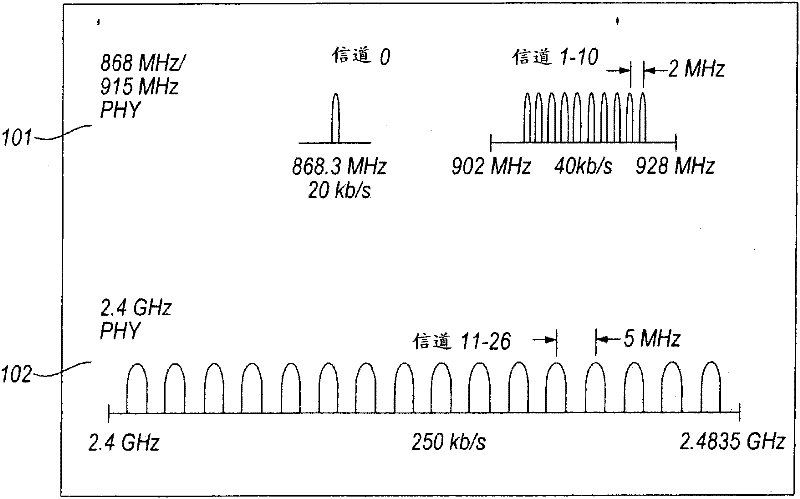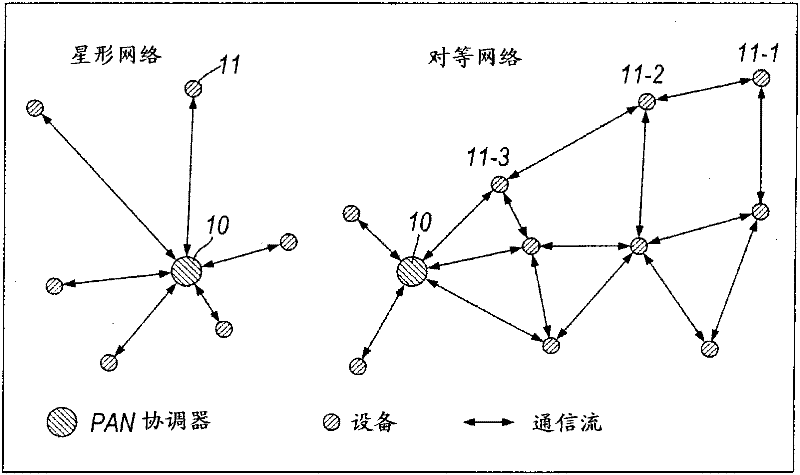Improvements to wireless sensor networks
一种无线传感器、传感器的技术,应用在网络拓扑、无线通信、医疗设备等方向,能够解决未提供MBAN数据可靠性、未提供流式传输数据等问题
- Summary
- Abstract
- Description
- Claims
- Application Information
AI Technical Summary
Problems solved by technology
Method used
Image
Examples
Embodiment Construction
[0062] Before describing embodiments of the present invention, some background will first be given on the parts of IEEE 802.15.4 that are expected to be relevant to the currently developing IEEE 802.15.6 standard and / or to body area networks including MBANs.
[0063] figure 1 The general architecture of an IEEE 802.15.4 WPAN, designated 100, is shown in terms of the layered OSI model, where the physical medium is accessed via the PHY layer containing the radio transceivers and their low-level control. As shown, in figure 2 Two alternative frequency bands 101, 102 for the PHY are illustrated in . The lower frequency band 101 provides a single 20 kb / s channel centered at 868.3 MHz, and / or ten channels each 40 kb / s centered at 915 MHz. The upper frequency band 102 provides 16 channels each at 250 kb / s and centered on a frequency of 2.44 GHz. Which of these frequency bands is used will depend on local regulatory requirements.
[0064] Access to the PHY is provided by figure ...
PUM
 Login to View More
Login to View More Abstract
Description
Claims
Application Information
 Login to View More
Login to View More - R&D
- Intellectual Property
- Life Sciences
- Materials
- Tech Scout
- Unparalleled Data Quality
- Higher Quality Content
- 60% Fewer Hallucinations
Browse by: Latest US Patents, China's latest patents, Technical Efficacy Thesaurus, Application Domain, Technology Topic, Popular Technical Reports.
© 2025 PatSnap. All rights reserved.Legal|Privacy policy|Modern Slavery Act Transparency Statement|Sitemap|About US| Contact US: help@patsnap.com



